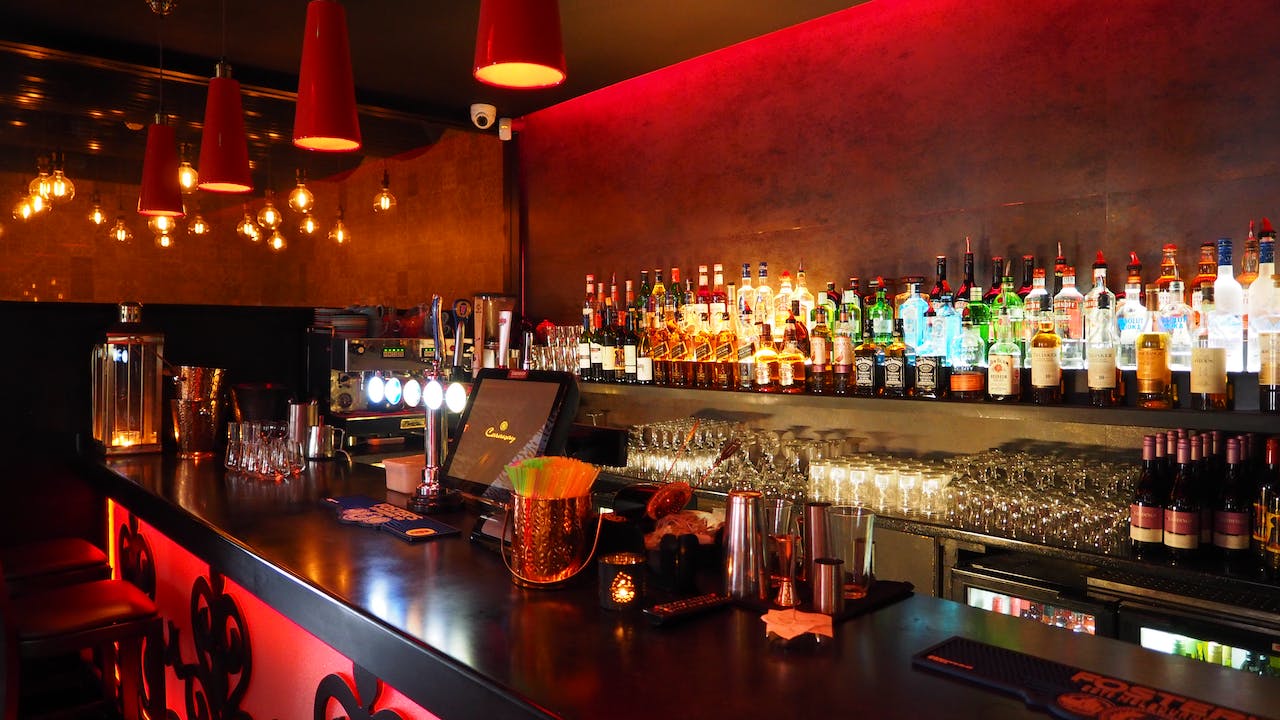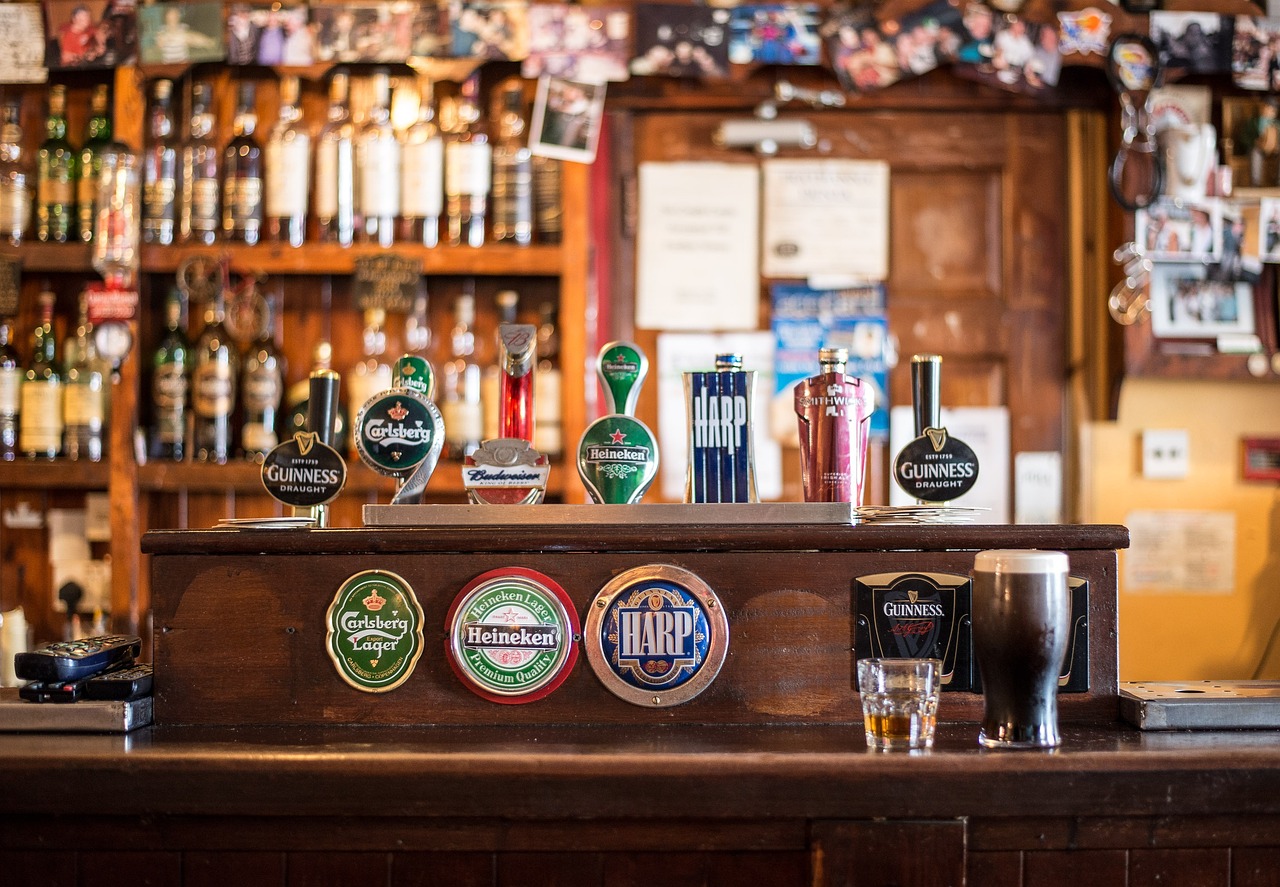Owning a bar sounds fun – and it can be incredibly rewarding. But you can expect a few challenges along the way. By carefully planning your launch and ensuring that everything is set up correctly, you can mitigate some of these challenges and increase the likelihood of your bar’s success.
Below are just a few key things to consider when starting a bar.
Table of Contents
Funding your bar
Opening a bar can cost anything from $25k to $1 million, depending on the type of bar you’re planning on setting up. Nightclubs and upmarket pubs tend to be on the higher end of the scale ($250k +). Specialty bars like wine bars and brewpubs – especially those that don’t serve food – can be significantly cheaper (usually $25k to $100k). However, in all cases, you’re looking at tens of thousands of dollars.
Most aspiring bar owners will take out business loans or seek out investment from VC firms/angel investors. There may even be the option of crowdfunding your bar. When exploring different options, make sure that you have a detailed business plan in place. A financial advisor may be able to help you with this.
Finding the right location
The location of your bar can significantly impact both the amount of business you generate and your outgoing costs. Generally, it’s a case of choosing between high foot traffic or low rent/tax. Bars in busy or attractive locations will often cost more to run but generate more business. Bars in more remote and less attractive locations will cost less to run, but you’ll have to do more marketing to attract customers.
On top of the location, think about the type of building that you’re choosing. Buildings that were previously bars will cost less to convert than buildings that weren’t already bars. You also need to consider the condition of the building as this will affect the amount of restoration and maintenance required.
Getting licensed
Several licenses and permits are required to open a bar. It’s important that you have all of these licenses approved before you serve your first customers. Some of the licenses you may need include:
- A business license
- A certificate of occupancy
- A liquor license
- A food license
- A music license
- A live entertainment license
- A pool table license
- A signage permit
- A resale permit
- A building health permit
You can find a detailed list here of all the different licenses you’ll need. The cost of these may vary depending on the state you are applying from. You can apply for each one online.
Deciding upon a USP
Every bar needs a USP (Unique Selling Proposition). This is the aspect of your bar that sets it apart from its competitors.
Having a USP may not be as necessary if you’re the only bar in your village. However, if you’ve got lots of local competition, it could be essential to have something that makes you stand out. A few examples of USPs for bars include:
- Specializing in a certain drink (like a wine bar, whisky bar or brewpub)
- Specializing in a certain food (like burgers, seafood or pizza)
- Offering certain live entertainment (like live music or comedy)
- Embracing a cultural or historical theme (such as an Irish bar, British pub, Tiki bar or art deco speakeasy)
- Becoming a sports bar and focusing on a specific type of sport (such as pool, football or baseball)
- Catering to a specific audience (such as dog owners, families, young adults or older people)
It’s worth looking for a local gap in the market when coming up with a USP. What type of bar is missing in your local area? And is there an audience for that type of bar? For example, a family bar-restaurant with a play area could be great in a suburban family area.
READ ALSO: 5 Cybersecurity Tips For Small Businesses
Choosing your food and drinks
Next, consider the types of foods and drinks you will serve. This can be quite a fun process, however there is also a science to it – as this bar menu guide proves.
The key is to keep your menu well-balanced. There should be enough variety for different types of drinkers and eaters, but at the same time, the menu shouldn’t be too vast. Consider your USP and try to offer the most variety in this area. For example, if you’re a wine bar, you may want to offer a larger selection of wines, but you may only need to sell one type of beer.
Setting your prices
Once you know what you’re selling, you then need to think about prices. Your prices should be high enough to cover all your operating costs, while also generating a profit. At the same time, you don’t want them to be so high that they put customers off.
Be strategic with pricing. Most bars will have certain profit-making items that are usually popular, but not always immediately apparent. For example, a bar focused around beer may still sell a lot of soda drinks and food. Instead of increasing the price of your main selling point (your beer), you could aim to make a profit on soda drinks and food by pricing these slightly higher than average, while keeping your beer prices slightly lower than average.
Hiring the right staff
Every bar needs a strong team of staff. Take your time to advertise so that you receive a large number of applications, and conduct interviews with as many promising applicants as possible. This will help you to build a strong team from the start.
Consider hiring a few experienced bartenders and chefs to help you with management. If you’re hiring family and friends to help, ensure they are truly capable of the job. Remember that there are many roles in a bar, and certain individuals may be better suited to specific roles rather than trying to cover all of them.
Adopting the right tech
Embracing modern technology can help your bar to run more efficiently. There are many different types of tech that can be worth investing in as a new bar. A few examples include:
- Bar management software for automating everything from staff scheduling to reserving tables
- Digital POS systems for taking orders
- Kitchen display systems for clearly showing kitchen staff each order
- A wireless card payment terminal
- Automatic glass-wash/dish-washing machines
These are just a few of the most useful tech solutions worth exploring. There could be all kinds of other fancy options worth looking into, from self-service coffee machines to robot waiters, depending on who your audience is.
Building your brand
Your bar needs a strong brand. This should reflect your USP, your target audience and your company goals.
Start by coming up with a name for your bar. Then consider a logo and all the different places you can put it (such as on your sign, uniforms, and menus). Other branding elements to consider could include a color scheme, certain font,s and a tone of voice (will your menu be worded in an elegant and formal way or a fun and laid back way).
READ ALSO: Spam Call: Is the Area Code 929 Spam?
Marketing your bar
Marketing is something you need to be doing on an ongoing basis. However, it’s something you should be doing particularly heavily before you open your bar.
The essential things you should do include setting up a website and social media pages, as well as designing signage for your bar. You could also consider other types of marketing, such as contacting your local newspaper, putting up posters around your bar, and even organizing a launch party for select people in the area (this could include local business owners and VIPs).
INTERESTING POSTS
- Essential Gaming Guide: Mastering Cybersecurity in the Digital Arena
- Hiking For Beginners: 7 Tips And Trick
- How To Get Into Video Editing
- Unveiling the Truth: Is NameCheap Legit?
- Great Ideas For Selling Products Both Online And In Stores
- What to Do if Your Driver’s License Number is Found on the Dark Web or Stolen?
About the Author:
John Raymond is a cybersecurity content writer, with over 5 years of experience in the technology industry. He is passionate about staying up-to-date with the latest trends and developments in the field of cybersecurity, and is an avid researcher and writer. He has written numerous articles on topics of cybersecurity, privacy, and digital security, and is committed to providing valuable and helpful information to the public.










